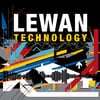Updated 2/4/13
One of the resources at HP (thanks Ben!) made the following comment to one of our customers and I thought it'd be a perfect post for the blog as it contains some useful information that some might not be aware of.
Here are the high-level differences between SAS and SATA disk drives:
Capacity:
- SATA (or now called NL-SAS for Nearline SAS) disk drives are the largest on the market. The largest SATA/NL-SAS drives available with widespread distribution today are 3TB.
- SAS disk drives are typically smaller than SATA. The largest SAS drives available with widespread distribution today are 600GB or 900GB.
- So, for capacity, a SATA/NL-SAS disk drive is 4X-5x as dense for capacity than SAS.
- A good way to quantify capacity comparison is $/GB. SATA will have best $/GB.
Performance:
- SATA/NL-SAS disk drives spin at 7.2k RPMs. Average seek time on SATA/NL-SAS is 9.5msec. Raw Disk IOPS (IOs per second) are 106.
- SAS disk drives spin at 15k RPMs. Average seek time on SAS is 3.5msec. Raw Disk IOPS (IOs per second) are 294.
- So, for performance, a SAS hard drive is nearly 3X as fast as SATA.
- A good way to quantify performance comparison is $/IOP. SAS will have best $/IOP.
Reliability: there are two reliability measures – MTBF and BER.
- MTBF is mean time between failure. MTBF is a statistical measure of drive reliability.
- BER is Bit Error Rate. BER is a measure of read error rates for disk drives.
- SATA/NL-SAS drives have a MTBF of 1.2 million hours. SAS drives have a MTBF of 1.6 million hours. SAS drives are more reliable than SATA when looking at MTBF.
- SATA drives have a BER of 1 read error in 10^15 bits read. SAS drives have a BER of 1 read error in 10^16 bits read. SAS drives are 10x more reliable for read errors. Keep in mind a read error is data loss without other mechanisms (RAID or Network RAID) in place to recover the data.
Here are some good links for comparing disk types:
http://www.seagate.com/docs/pdf/datasheet/disc/ds_barracuda_es_2.pdf
http://www.seagate.com/docs/pdf/datasheet/disc/ds_cheetah_15k_7.pdf
http://h18004.www1.hp.com/products/servers/proliantstorage/drives-enclosures/index.html
http://storagebuddhist.wordpress.com/2011/07/01/nearline-sas-who-dares-wins/
http://www.seagate.com/docs/pdf/whitepaper/tp_sas_benefits_to_tier_2_storage.pdf
http://www.tomsitpro.com/articles/seagate-serial-attached-scsi-disk-drive-data-storage,2-119.html
http://en.wikipedia.org/wiki/Serial_attached_SCSI#Nearline_SAS



